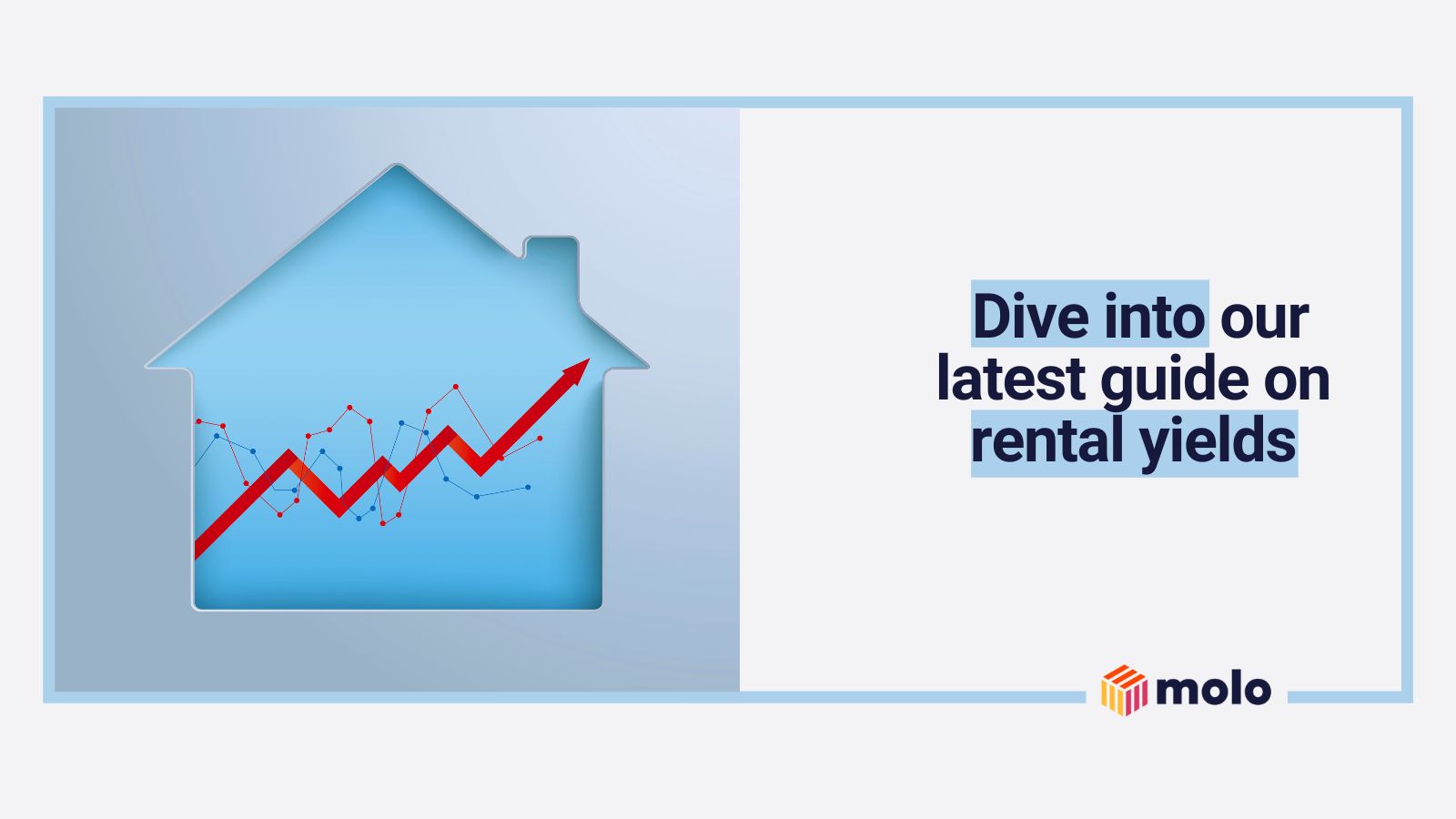When you’re investing in a buy-to-let, expect to hear plenty about rental yields. Along with capital appreciation, yields are one of the primary factors on deciding if a buy-to-let is a good investment. With that in mind, this guide has everything you need to know about rental yields and the impact they can have on your property investment.
Rental yields indicate the annual rental income of a property as a percentage of its purchase price. It’s calculated by dividing the yearly rental income by the total property cost, then multiplying by 100 to get a percentage.
Example of Gross Rental Yield:
Let’s say you bought a property in the UK that is worth £200,000 and generates £10,000 in annual rent.
So, £10,000 divided by £200,000 and multiplied by 100 gives us a percentage of 5%. This means the rental yield is 5%.
A high rental yield suggests a more profitable investment, but it doesn’t consider costs like maintenance and void periods. Therefore, investors often use net rental yield for a more accurate picture. The net rental yield takes into account annual rental income as a percentage of the property’s cost, while also factoring in expenses such as maintenance and vacancies.
Example of Net Rental Yield:
If we take the same figures as above, we have a property worth £200,000 and an annual rental income of £10,000.
To get the net rental yield, we need to account for the costs associated with owning and maintaining the property, costs that may include management fees, insurance and maintenance.
Let’s say these costs amount to £2,000 per year. The net rental income would then be £10,000 – £2,000 = £8,000. The net rental yield would be 8,000 divided 200,000 multiplied by 100. In this case, the net rental yield is 4%.
Why is the rental yield so important?
While the rental yield might seem like an obvious factor to seasoned landlords, it can easily catch first-time investors off guard. If you’re purchasing a buy-to-let for the first time, you’ll need to know the rental yield.
Without knowing the rental yield, it’s difficult to make predictions about how much profit you’ll make from the rent you charged. It acts as a barometer of the potential return on your property investment, helping to provide a snapshot of the annual income a property can generate relative to its purchase price or current market value.
What is a high rental yield?
The big question all landlords want to know is ‘what is a high rental yield?’ There isn’t a one-size-fits-all answer as such, and it depends on the location. For example, yields in London are typically lower than Manchester even though rents are higher. This is because the average price of a home in London is over £500,000, while in Manchester, you can expect to pay an average of £235,000.
However, If we’re taking a generalised approach, a high rental yield is typically considered to be around 7% to 8%. Thus signifies that a property can generate a substantial income relative to its purchase price or market value. For instance, in 2023, regions such as the East Midlands offer yields of 6.49%.
High rental yields can be particularly attractive in areas where property prices are relatively low but rental demand is high, leading to increased rental income.
It’s important to note that a high rental yield is just one factor to consider when investing in property, as capital growth and market stability are also crucial for long-term investment success.
What is a low rental yield?
A low rental yield in buy-to-let properties refers to a lower return on investment from rental income, often indicating higher property prices. While this may reduce immediate short-term income, it typically suggests a more desirable location or property type that potentially has a better chance of capital appreciation over time. It’s hard to quantify a low yield as locations have different yields, but anything under 3% is usually on the lower side.
Rental yield vs rental income
At face value, it might seem like a higher rental income signifies a good yield. But this isn’t always the case, as there are other factors – like property value and outgoings – to consider.
Essentially, rental yield and income are two distinct concepts often used in property investment discussions. While they both relate to the financial aspects of renting out a property, they represent different aspects of the investment analysis.
Rental income
Refers to the actual amount of money generated from renting out a property. It’s the total sum of money received from tenants as rent payments over a specific period, typically on a monthly or annual basis.
Rental income is a direct measure of the revenue generated by the property and is typically calculated before deducting any expenses or costs associated with the property.
Rental yield
Rental yield is a financial ratio that compares the rental income to the value of the property. It’s expressed as a percentage and helps investors assess the profitability of an investment property relative to its value.
Rental yield takes into account the rental income and the property’s worth, allowing investors to understand the return on their investment.
Final thoughts: yields
Understanding how rental yields work can significantly enhance your buy-to-let investment strategy. Whether it’s the gross yield offering a snapshot of potential income, or the net yield providing a more nuanced view after expenses, these metrics will play an important role in your buy-to-let investment.


